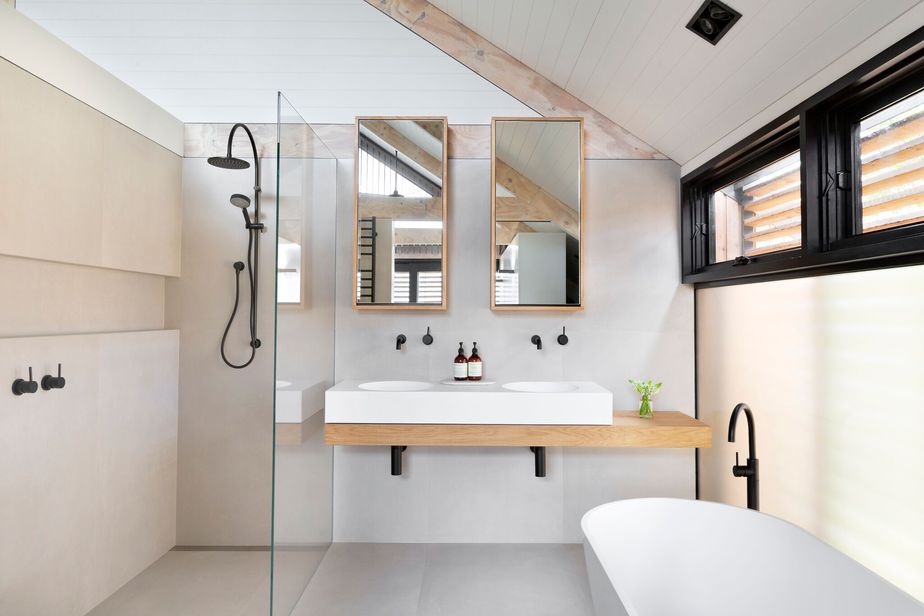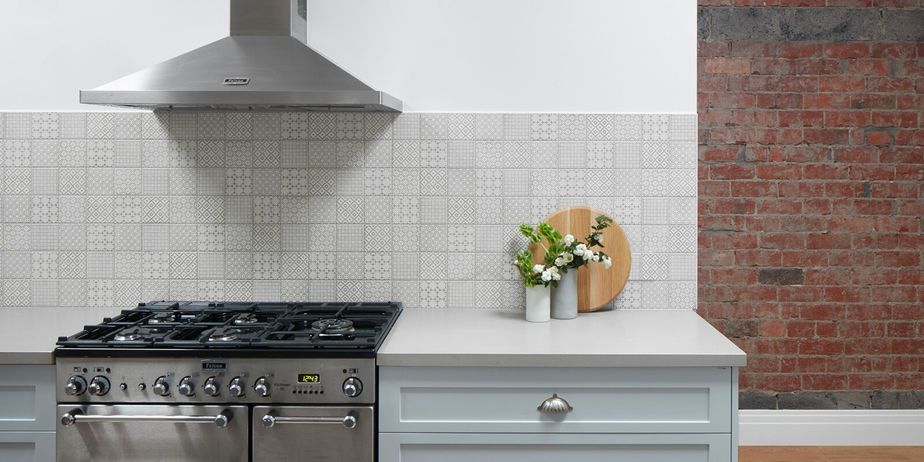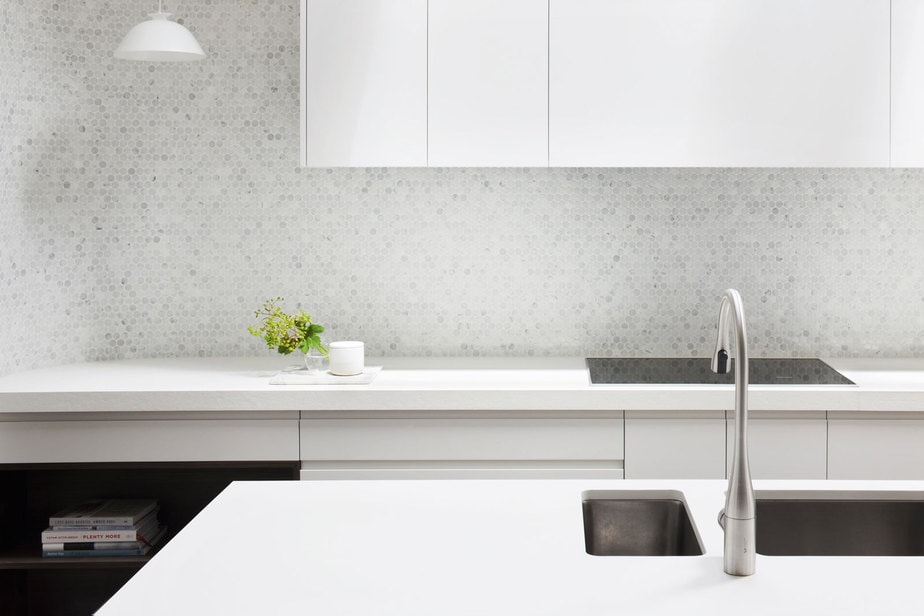Let’s talk tiles
When clients come to us with plans to renovate their kitchen or bathroom (or both!), we always tell them that one of the most important design decisions they will have to make is around the choice of tiles.
While there are many other important factors – colour scheme, cabinetry, tapware, fixtures, and so on – tiling is the single factor that can have the biggest impact on the end result. Tiles quite literally lay the foundations for the room’s entire design, encompassing the floors and walls, so it comes as no surprise that getting the size, composition, design, material and texture right is key for a successful renovation.
We asked SmarterBATHROOMS+ designer and winner of the KBDI Bathroom Designer of the Year award, Vanessa Cook, to share some insight on the different types of tiles and how they can be used.
Large format tiles
Making a huge comeback and set to be a popular choice for 2018 are large format tiles. These can range in size from 600mm x 900mm to 2400mm x 1200mm and can have a huge impact on your space. Not only do these tiles make the room appear bigger, the easy-to-clean nature of them (bigger tiles require less grouting) means your home will look neater in the long run and help build a lasting sleek aesthetic.
For large format tiles, porcelain is a popular choice of material. The beauty of large format tiles lies in their classic look, a style that will never expire. One thing to be aware of is that, because of the bigger tile size, you’ll need two tilers to get the job done. This will cost a little more, but the results will be worth it.
Standard tiles
The benefit of choosing standard tiles (300mm x 600mm) is the plethora of options you’ll have when it comes to colour and design. If you have a vision of the finished room designed in your mind and your heart is set on a particular tile colour, standard tiles will offer you the best chance of finding it.
When you’ve discovered that perfect hue, there is a range of exotic ways you can lay the tiles, such as herringbone, chevron and brick bond patterns. The interesting geometric composition will help create visual movement and lend your bathroom or kitchen a real point of difference.
Patterned tiles
If you’re thinking about installing patterned tiles, make sure you’re 100% sure about the design – it will certainly sway the room’s overall look. From subtle colour combinations on smooth tiles to intricately detailed designs on textured tiles, introducing pattern through your tiling is the ultimate way to express your personality in the room’s design.
You could replicate a pattern from floor to ceiling or include a feature wall within your chosen design. Don’t be afraid to get creative and include strips of patterned tiling into a clean, white-tiled wall – that way, you can inject fun into the room without it dominating the entire aesthetic.
4. Mosaic tiles
Mosaic tiling certainly hasn’t gone out of fashion. In fact, we are seeing more and more of it, particularly among our more creative clients. Mosaic tiling gives you the chance to be more experimental with shapes, colours and materials. For example, you could choose hexagonal shapes or penny rounds, ceramic or porcelain, dark or light, gloss or matte and multicoloured – the list is endless.
One way to incorporate a fairly flamboyant mosaic element into a more traditional home is to include it in the shower recess or as a kitchen splashback. Taking a backseat position in the design composition, it won’t steal the spotlight or dominate the aesthetic, but simply complement it with a twist of eccentricity. If you have a curved wall that you’re looking to tile, mosaic is certainly the way forward. Do bear in mind that smaller mosaic tiles will take longer to lay, which could affect the length of your renovation.
Brick tiles
Brick tiles are a great way to achieve that distinctly modern, industrial vibe that bare brick walls create. Rather than tearing apart your home and getting the bricklayers in, you can actually use brick tiles to mimic the visual and tactile elements of a real brick wall.
The tiles can be 300mm x 100mm or as small as 75mm x 150mm, and the growing popularity of the exposed brick style means that these can now be ordered in more bespoke forms than previously, for example in a handmade look. If you’re after a raw aesthetic in your bathroom or kitchen, this could be the ideal shortcut.
Coloured grout
Most of the time, the design effect of your tiling will come from the tiles themselves. But by thinking outside the box, you’ll discover that you can actually create quite an impact by focusing on what’s holding the tiles together – the grout.
By using coloured and even textured grout, you can settle on fairly plain tiles without ending up with a plain overall look. If you’re looking for a fun and experimental design that will get the guests talking, create a wall with less contrast by pairing dark tiles with dark grout, or give plain white tiles a pop with pink grout for a chic and quirky look.
After reading this, you are one step closer to deciding on what’s soon to be your new bathroom or kitchen’s proudest feature.
Remember, always consult an expert before making any final decisions or purchases – and certainly to help get the job done. The tiling of a project will make or break it, so be sure the renovator you work with has a wealth of experience and focuses on quality. Mistakes in both the choice of tiling and the renovation itself will be expensive and timely. Engage with a professional and get it right the first time.
To speak with one of our experts about a bathroom or kitchen renovation, or request a free in-home consultation, simply get in touch. Call us today on 1300 662 838.
Inspiration and advice
As featured in






